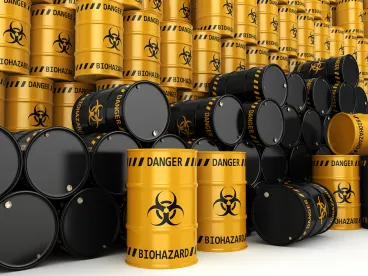In a 2-1 opinion this August, the Ninth Circuit Court of Appeals instructed US EPA to revoke all tolerances and cancel all registrations for chlorpyrifos, one of the most widely used conventional insecticides in the United States. If left in place, this ruling will effectively ban domestic use of the popular pesticide, though the Ninth Circuit may revise its injunction to allow continued non-food applications.
Background
Developed in the 1960s, chlorpyrifos has become a fundamental part of pest management practices for numerous products, including beans, citrus, corn, cotton, soybeans, and wheat, as well as serving an important role in mosquito control.
Since it is used on food crops, chlorpyrifos is subject to both registration under the Federal Insecticide, Fungicide and Rodenticide Act (FIFRA), and the setting of tolerances deemed safe by the Agency under the Federal Food, Drug, and Cosmetics Act (FFDCA). These tolerances represent the maximum level of pesticide residue allowed in or on raw agricultural commodities and processed foods. Without a tolerance, or exemption from a tolerance, food containing residues of the pesticide are considered ‘‘adulterated’’ under the FFDCA and cannot be distributed in interstate commerce.
While US EPA has placed restrictions on the use of chlorpyrifos in the past, including reaching a voluntary agreement with registrants in 2000 that phased out most residential uses of chlorpyrifos for pest control, US EPA set tolerances for chlorpyrifos based on its potential to cause acetylcholinesterase inhibition that allow chlorpyrifos to be used in many common agricultural and commercial settings.
In 2007, two environmental groups, Pesticide Action North American (PANNA) and the Natural Resources Defense Council (NRDC), filed a petition to revoke these tolerances. The groups asserted that, even at levels found to be safe based on a lack of acetylcholinesterase inhibition, chlorpyrifos nonetheless has the potential to cause health problems, including neurodevelopmental impacts, on infants and children through food-based exposure.
Having received only partial responses to their petition by 2014, the environmental groups sought relief in the Ninth Circuit, which eventually ordered US EPA to rule on the petition by March 2017. Twice, US EPA proposed to revoke its tolerances for chlorpyrifos, first in 2015 and then in 2016. Both times, US EPA proposed to support its revocation with a human health risk assessment. Last updated in 2016, this assessment concluded that available studies were insufficient to develop a quantitative point of departure for chlorpyrifos, but were sufficient to indicate neurological impacts at levels below the current tolerances.
US EPA never finalized its proposed revocation. Instead, two days before the Ninth Circuit’s deadline to act, then-US EPA Administrator Scott Pruitt signed an order on March 29, 2017 denying the environmental groups’ petition in its entirety. The order stated that, while the risk of neurodevelopmental impacts from chlorpyrifos warranted further study, the Agency would need “greater certainty as to whether the potential exists for adverse neurodevelopmental effects to occur from current human exposure to chlorpyrifos” before it would adjust its tolerances. The order stated that US EPA would complete these studies within the same timeframe as its 15-year registration review under FIFRA, which is due in 2022.
The LULAC Case
Following US EPA’s decision, several environmental groups filed objections with US EPA and petitions for judicial review in the Ninth Circuit in League of United Latin American Citizens (LULAC), v. Wheeler, Case No. 17-71636 (9th Cir.). Five states (New York, Maryland, Vermont, Washington, and Massachusetts) and the District of Columbia promptly intervened in support.
The petitioners argued that US EPA’s risk assessment represented a final finding of the Agency that chlorpyrifos is not safe for use under FIFRA and that US EPA is therefore required to revoke all tolerances.
In response, US EPA did not challenge the substance of the petitioners’ claims. While in its rulemaking US EPA had emphasized there was insufficient scientific information available to conclude that the public was being exposed to an unhealthy level of chlorpyrifos residue, on appeal US EPA did not contest the petitioners’ claims that the science was settled and that the conclusions of the Agency in its 2016 human health risk assessment were the final conclusion of the Agency. Instead, US EPA focused on the jurisdiction of the court, arguing that the Ninth Circuit lacked subject matter jurisdiction to hear the case.
Under the FFDCA, US EPA argued, judicial review is available only from specific agency actions, including “any order issued under subsection (f)(1)(C) [requiring the submission of data] or (g)(2)(C) [ruling on objections].” 21 U.S.C. § 346a(h). Further, the FFDCA provides that “[a]ny issue as to which review is or was obtainable under this subsection shall not be the subject of judicial review under any other provision of law.” 21 U.S.C. § 346a(h)(5). Thus, US EPA argued, the petitioners had no right to directly seek judicial review of US EPA’s denial of their petition, but must first wait for a ruling on their pending objections.
The Ninth Circuit rejected this argument, finding that, despite the mandatory language of the FFDCA’s judicial review provision, the FFDCA did not clearly state a limitation on the jurisdiction of the courts, but rather established a claim-processing rule that requires exhaustion of administrative remedies before seeking judicial review. Further, as a claim-processing rule, this requirement could also be waived by the court in appropriate circumstances. The court then found that it was appropriate to waive the requirement here, citing US EPA’s long delay in ruling on the 2007 petition, 13-month delay in ruling on the petitioners’ objections, and the court’s concern that the Agency would continue to delay ruling on the petitioners’ objections. The dissent disagreed with both of these conclusions, arguing that the FFDCA’s restrictions on judicial review are jurisdictional and that no exception to the requirement for exhaustion of administrative remedies applies.
Having found jurisdiction, the Ninth Circuit then issued an injunction. Since US EPA had not challenged the factual assertions of the petitioners, the Ninth Circuit concluded that US EPA had “forfeited any merits-based arguments” and proceeded to order US EPA revoke all tolerances and cancel all registrations for chlorpyrifos within 60 days.
In September, US EPA petitioned for rehearing, again challenging the jurisdiction of the Ninth Circuit panel and also the scope of the court’s order, which not only requires US EPA to revoke food tolerances for chlorpyrifos but also all registrations under FIFRA. The petitioners have conceded in response that some modification is appropriate, and have proposed limiting the order to uses in food and to allow US EPA more time to complete revocation of these registrations, though they also maintain that they may in the future pursue further revocation of remaining registrations under other petitions that they have filed.
Significance of the LULAC Decision
The court’s order, even if modified to allow non-food uses of chlorpyrifos to continue, removes an important component of agricultural and commercial pest management. As US EPA noted in its decision, “for many decades chlorpyrifos has been and remains one of the most widely used pesticides in the United States, making any decision to retain or remove this pesticide from the market an extremely significant policy choice.” The United States uses roughly 10 million pounds of chlorpyrifos annually. In addition, it is the only cost-effective treatment for some pests on food crops ranging from asparagus to wheat. It remains to be seen whether this rulemaking will survive further review, but with a short-term ban on chlorpyrifos looming, the stakes for American farmers and businesses just got higher.
In addition, the LULAC decision may provide further encouragement to NGOs to challenge US EPA’s actions on pesticides. The Ninth Circuit found that US EPA’s risk assessment identifying impacts on childhood neurological development was enough to require the Agency to revoke all tolerances for chlorpyrifos. The court further found that, once US EPA had reached this conclusion, it could not postpone acting to conduct additional analysis. These results may encourage new challenges, particularly where studies have brought into question the validity of US EPA’s past decisions.




 />i
/>i

